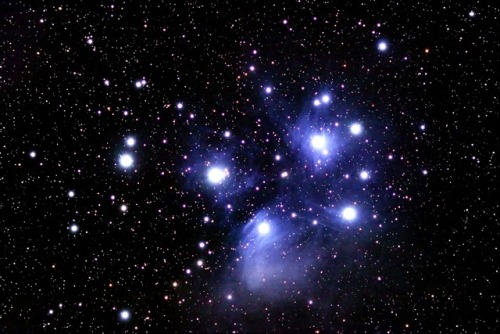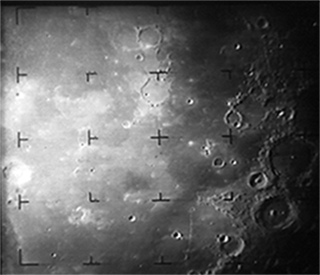I Was Honored To Be Selected As A Judge For This Contest. A Young Man Named Alexander Mather From Virginia

I was honored to be selected as a judge for this contest. A young man named Alexander Mather from Virginia chose the name “Perseverance” and wrote the winning essay. Perseverance is scheduled to launch to Mars this July. @nasa @nasajpl #nasa #mars #marsrover #space #perseverance #mars2020 https://www.instagram.com/p/CBS-LPVH6tj/?igshid=1pzag6xydhku4
More Posts from Jbrackettssa and Others

Get your boarding pass and join me in celebrating the upcoming launch of the SpaceX Crew Dragon - Resilience. Four astronauts are scheduled to ride a SpaceX Falcon 9 to the ISS on Saturday, November 14, 2020. #spacex #nasa #iss #launchamerica #spacestation20th #internationalspacestation #crewdragon #falcon9 https://fb.me/e/1OVkkJk4Q https://www.instagram.com/p/CHRiOwjDBHk/?igshid=1w7e8usp6ffy4
What’s Up October 2017
What’s Up For October?
Planet Pairs, Stellar Superstars, Observe The Moon Night!!

This month, catch planet pairs, our moon near red stars, an asteroid, meteors and International Observe the Moon Night!

You can’t miss bright Venus in the predawn sky. Look for fainter Mars below Venus on the 1st, really close on the 5th, and above Venus after that.

Midmonth, the moon is visible near Regulus, the white starry heart of the constellation Leo.

In the October 8-11 predawn sky watch the moon glide near the Pleiades star cluster and pass near the red stars Aldebaran in the constellation Taurus and Betelgeuse in Orion.

After dusk in the early part of the month look for Saturn in the southwest sky above another red star: Antares in Scorpius. Later in the month, find the moon above Antares October 22 and 23.

Saturn will be above the moon on the 23rd and below it on the 24th.

Uranus reach opposition on October 19th. It’s visible all night long and its blue-green color is unmistakeable. It may be bright enough to see with your naked eye–and for sure in binoculars.

The Orionids peak on October 20–a dark, moonless night. Look near Orion’s club in the hours before dawn and you may see up to 10 to 15 meteors per hour.

Use binoculars to look for bright asteroid 7 Iris in the constellation Aries. Newbies to astronomy should be able to spot this magnitude 6.9 asteroid - even from the city.

Look later in the month and sketch its positions a day or two apart–to see it move.

Finally, celebrate International Observe the Moon Night on October 28 with your local astronomy club, Solar System Ambassador, museum, or planetarium. The first quarter moon that night will display some great features!
Watch the full What’s Up for October Video:
Make sure to follow us on Tumblr for your regular dose of space: http://nasa.tumblr.com.

As @kuiperkat said, all the cool kids are doing it. #tothemoonandback https://www.instagram.com/p/CMBSVo9j58l/?igshid=1r2ifm8ptjqss
Hubble Peers at Cosmic Blue Bauble
NASA - Hubble Space Telescope patch. April 12, 2019
Globular clusters are inherently beautiful objects, but the subject of this NASA/ESA Hubble Space Telescope image, Messier 3, is commonly acknowledged to be one of the most beautiful of them all. Containing an incredible half-million stars, this 8-billion-year-old cosmic bauble is one of the largest and brightest globular clusters ever discovered. However, what makes Messier 3 extra special is its unusually large population of variable stars — stars that fluctuate in brightness over time. New variable stars continue to be discovered in this sparkling stellar nest to this day, but so far we know of 274, the highest number found in any globular cluster by far. At least 170 of these are of a special variety called RR Lyrae variables, which pulse with a period directly related to their intrinsic brightness. If astronomers know how bright a star truly is based on its mass and classification, and they know how bright it appears to be from our viewpoint here on Earth, they can thus work out its distance from us. For this reason, RR Lyrae stars are known as standard candles — objects of known luminosity whose distance and position can be used to help us understand more about vast celestial distances and the scale of the cosmos. Messier 3 also contains a relatively high number of so-called blue stragglers, which are shown quite clearly in this Hubble image. These are blue main sequence stars that appear to be young because they are bluer and more luminous than other stars in the cluster. As all stars in globular clusters are believed to have formed together and thus to be roughly the same age, only a difference in mass can give these stars a different color. A red, old star can appear bluer when it acquires more mass, for instance by stripping it from a nearby star. The extra mass changes it into a bluer star, which makes us think it is younger than it really is. Messier 3 is featured in Hubble’s Messier catalog, which includes some of the most fascinating objects that can be observed from Earth’s Northern Hemisphere. See the NASA-processed image and other Messier objects at: https://www.nasa.gov/content/goddard/hubble-s-messier-catalog.
Hubble Space Telescope (HST)
For more information about Hubble, visit: http://hubblesite.org/ http://www.nasa.gov/hubble http://www.spacetelescope.org/ Text Credits: ESA (European Space Agency)/NASA/Rob Garner/Image, Animation, Credits: ESA/Hubble & NASA, G. Piotto et al. Best regards, Orbiter.ch Full article
NASA's Neutral Buoyancy Lab: The Ultimate Underwater Simulator for Astronauts
NASA’s Neutral Buoyancy Lab (NBL) is a state-of-the-art underwater facility located in Houston, Texas. It serves as an underwater simulation environment for astronauts to train for spacewalks and other extravehicular activities (EVAs). The NBL is one of the most advanced training facilities in the world and plays a critical role in preparing astronauts for the challenges they will face in space.
The NBL is a massive indoor pool that is over 200 feet long, 100 feet wide, and 40 feet deep. It contains a full-scale mock-up of the International Space Station (ISS) and other space structures, allowing astronauts to practice and perfect their spacewalking techniques in a controlled and safe environment. The pool is filled with over 6 million gallons of water, which provides a simulated weightless experience similar to that of space.
Astronauts are equipped with a full spacewalk suit, which provides them with life support and protection from the harsh conditions of space. The suit is buoyant, which makes it difficult for astronauts to move around in water. To overcome this challenge, the suit is weighted with lead weights to balance out the buoyancy, making it possible for astronauts to move around freely in the water. This process of weight balancing is called "neutral buoyancy," which gives the NBL its name.
The NBL is not only a training facility for spacewalking, but it is also used to test new spacewalk equipment and procedures. It allows engineers and scientists to observe how equipment and procedures perform in a simulated microgravity environment. This information is then used to make improvements and ensure the safety of astronauts in space.
One of the unique features of the NBL is its ability to simulate various lighting conditions, including daylight, nighttime, and the red lighting that is used during spacewalks. This capability allows astronauts to train for all types of spacewalking scenarios and ensures that they are well-prepared for any situation they may encounter in space.
In conclusion, NASA's Neutral Buoyancy Lab is a crucial component of astronaut training and space exploration. It provides a safe and controlled environment for astronauts to train for spacewalks and other EVAs, while also allowing engineers and scientists to test new equipment and procedures. The NBL plays a vital role in ensuring the success and safety of NASA's space missions.



https://www.instagram.com/reel/CxYDkafxqs9/?igshid=NzZhOTFlYzFmZQ==

Pleiades

I host public outreach events about the science and research taking place everyday on the International Space Station. A favorite event of mine is called "Story Time From Space", where astronauts onboard the ISS read children's stories featuring space science and STEM topics. (Opinions are my own.)
187 posts

